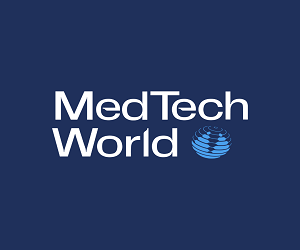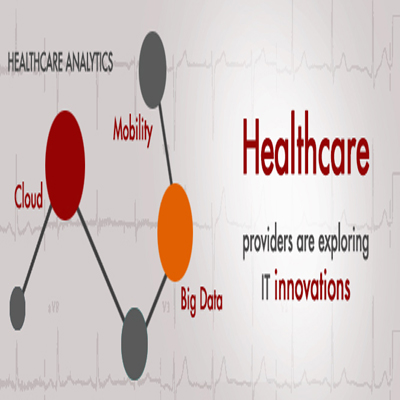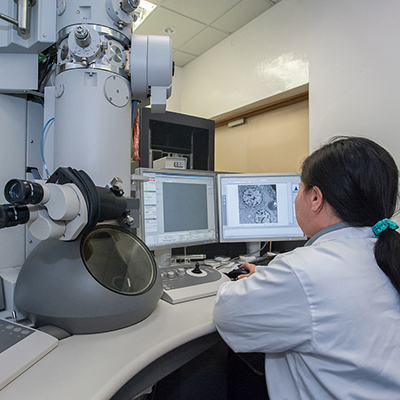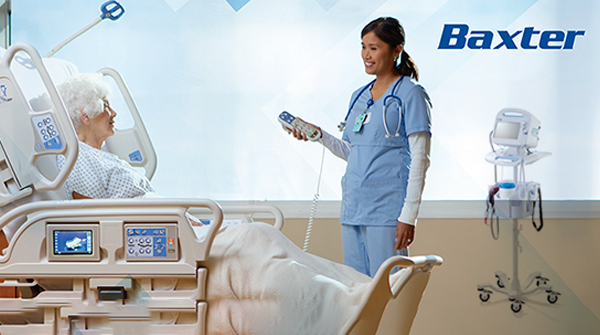The Role of Healthcare Analytics in Hospital Management
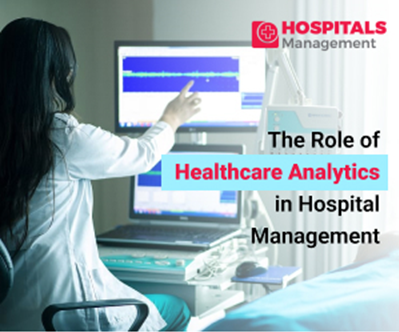
Introduction
In the ever-changing realm of healthcare, hospitals are confronting growing demands to provide top-notch care while effectively controlling expenses. Hospital administrators grapple with the weighty responsibility of making pivotal choices that can impact patient well-being, operational effectiveness, and fiscal viability. Thankfully, the emergence of healthcare analytics has transformed hospital operations by furnishing invaluable insights drawn from extensive data stores. In this article, we will delve into the essential role played by healthcare analytics in hospital management, encompassing its uses, advantages, hurdles, and forthcoming possibilities.
I. Applications of Healthcare Analytics in Hospital Management
1. Clinical Decision Support:
Healthcare analytics aids in clinical decision-making by analyzing patient data to identify trends, risks, and potential complications. For example, predictive analytics can help doctors anticipate adverse events, allowing for early intervention and improved patient outcomes.
2. Operational Efficiency:
Hospitals rely on analytics to optimize resource allocation, reduce patient wait times, and streamline workflows. By analyzing data on patient admissions, discharges, and transfers, hospitals can make real-time adjustments to staff schedules and resource allocation.
3. Revenue Cycle Management:
Analytics plays a pivotal role in revenue cycle management by identifying opportunities to enhance billing accuracy and reduce claims denials. It helps hospitals identify coding errors, improve charge capture, and optimize pricing strategies.
4. Patient Experience Enhancement:
Through sentiment analysis and patient feedback data, hospitals can gauge patient satisfaction and tailor their services accordingly. Analytics can uncover patterns in patient complaints and preferences, enabling hospitals to make improvements in areas like communication, amenities, and overall care.
5. Population Health Management:
Hospitals use analytics to identify high-risk patient populations, track disease prevalence, and design targeted interventions. This proactive approach allows healthcare providers to reduce hospital readmissions and improve overall community health.
II. Benefits of Healthcare Analytics in Hospital Management
1. Improved Clinical Outcomes:
Analytics plays a pivotal role in healthcare by offering valuable insights from patient data, enabling clinicians to make more informed decisions. This, in turn, leads to improved accuracy in diagnoses and treatment strategies. Predictive analytics, a subset of this approach, excels in identifying individuals who may be at risk for particular medical conditions, thus allowing for timely interventions.
2. Cost Reduction:
Hospitals can identify cost-saving opportunities through analytics, such as optimizing supply chain management, reducing unnecessary tests, and minimizing readmissions. These cost reductions contribute to financial sustainability.
3. Enhanced Patient Satisfaction:
Analytics-driven improvements in patient care and experience lead to higher patient satisfaction scores, which can positively impact a hospital's reputation and revenue.
4. Streamlined Operations:
Data-driven insights enable hospitals to optimize their operations, leading to shorter wait times, efficient resource utilization, and improved staff productivity.
5. Better Resource Allocation:
Hospitals can allocate resources like staff and equipment more effectively based on demand, reducing waste and ensuring that patient needs are met promptly.
III. Challenges in Implementing Healthcare Analytics
1. Data Integration:
One of the primary challenges is integrating data from various sources within the hospital, such as electronic health records (EHRs), billing systems, and administrative databases. Ensuring data accuracy and consistency is crucial.
2. Data Security and Privacy:
Handling sensitive patient data requires robust security measures to protect against breaches and maintain patient privacy. Hospitals must comply with regulations like HIPAA (Health Insurance Portability and Accountability Act) to avoid legal issues.
3. Staff Training:
Healthcare analytics tools require skilled personnel to operate effectively. Hospitals must invest in training their staff or hire data analytics experts, which can be a resource-intensive process.
4. Interoperability:
Many healthcare systems use different EHRs and software solutions that may not easily communicate with each other. Achieving interoperability is essential for comprehensive data analysis.
5. Resistance to Change:
Implementing healthcare analytics often requires a cultural shift within the organization. Resistance to change among staff and clinicians can hinder adoption and successful integration.
IV. The Future of Healthcare Analytics in Hospital Management
1. Artificial Intelligence (AI) and Machine Learning:
Artificial intelligence (AI) and machine learning are poised to assume an ever more pivotal role in the realm of healthcare analytics. These cutting-edge technologies possess the capability to scrutinize extensive datasets with greater efficiency, culminating in heightened precision for predictions and the formulation of personalized treatment strategies.
2. IoT and Wearables:
The proliferation of IoT devices and wearables will generate even more data for healthcare analytics. Hospitals can monitor patients remotely, improving chronic disease management and reducing hospital admissions.
3. Predictive Analytics for Pandemics:
The COVID-19 pandemic highlighted the need for predictive analytics in healthcare. Hospitals will invest in tools to predict disease outbreaks, allocate resources, and plan responses effectively.
4. Patient-Centered Care:
Healthcare analytics will enable hospitals to provide more patient-centered care by tailoring treatments and services to individual needs and preferences.
5. Ethical Considerations:
As healthcare analytics becomes more advanced, ethical considerations surrounding data privacy, bias in algorithms, and the responsible use of data will become increasingly important.
V. Leveraging Data for Research and Innovation
Beyond its immediate applications in clinical care and operations, healthcare analytics plays a crucial role in advancing medical research and innovation. Hospitals generate vast amounts of data daily, including patient records, lab results, and imaging studies. Healthcare analytics can mine this treasure trove of information to identify trends, uncover potential research avenues, and support evidence-based practices.
1. Drug Discovery and Development:
Healthcare analytics aids in identifying patient cohorts for clinical trials, evaluating the effectiveness of medications, and predicting adverse drug reactions. This accelerates drug discovery and development processes.
2. Genomic Medicine:
Analyzing genetic data through bioinformatics and machine learning enables hospitals to personalize treatment plans based on a patient's genetic makeup. This emerging field, known as precision medicine, promises more effective therapies with fewer side effects.
3. Epidemiological Studies:
Hospitals can use analytics to track disease prevalence and conduct epidemiological studies. This capability proved invaluable during the COVID-19 pandemic, enabling hospitals to monitor and respond to outbreaks effectively.
4. Innovation in Healthcare Delivery:
Hospitals can use analytics to redesign care pathways, optimize resource allocation, and introduce telehealth solutions. These innovations improve patient access to care and reduce costs.
VI. Real-time Analytics for Emergency Response
Healthcare analytics also plays a crucial role in emergency response and disaster management. Hospitals equipped with real-time data analytics tools can quickly assess the impact of a disaster or surge in patient volume, allocate resources accordingly, and make informed decisions to save lives.
1. Disaster Preparedness:
Hospitals use predictive analytics to anticipate the impact of natural disasters or large-scale emergencies on their operations. This includes forecasting patient arrivals, supply chain disruptions, and staff availability.
2. Resource Allocation:
During emergencies, hospitals can dynamically allocate resources, such as ventilators, ICU beds, and medical supplies, based on real-time analytics. This ensures that critical care is provided to those who need it most.
3. Communication and Coordination:
Analytics tools facilitate communication and coordination among healthcare providers, emergency responders, and government agencies. Data-driven insights ensure a more effective response to crises.
Conclusion
In summary, healthcare analytics transcends its role as a mere instrument for enhancing daily hospital activities and patient care. It serves as a driving force for research, innovation, and swift responses in emergencies. With the ongoing evolution of technology and the expansion of data resources, healthcare analytics is set to assume an even more essential position in hospital management. This, in turn, will significantly influence the trajectory of healthcare provision and patient results. To position themselves at the vanguard of healthcare excellence, hospitals must prioritize investments in analytical capabilities and adopt data-centric decision-making procedures.


